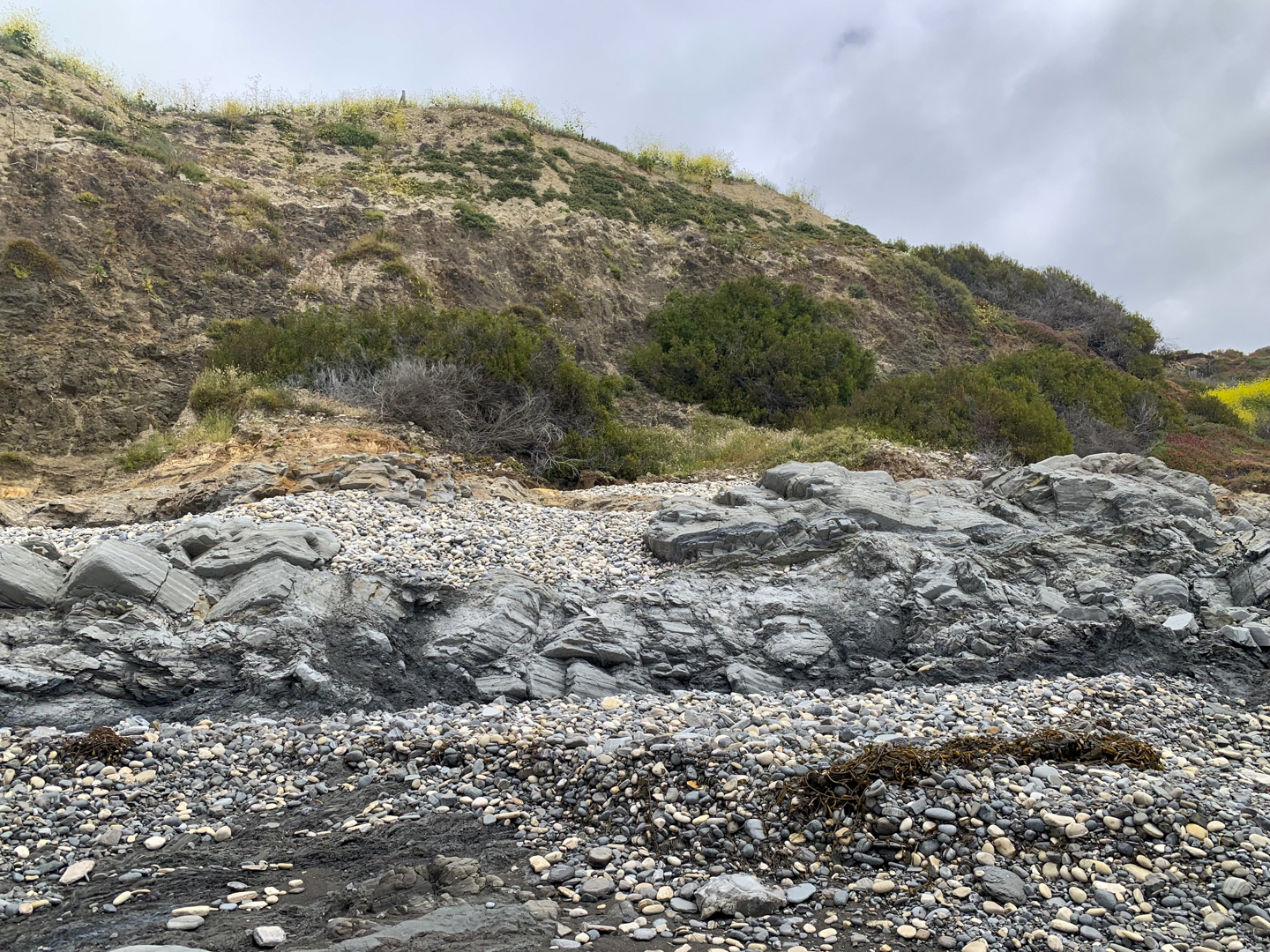Excerpt:
There’s an entirely new coastline in Rancho Palos Verdes.
The rapidly expanding and accelerating complex of landslides on the southeastern tip of the Palos Verdes peninsula continues to wreak havoc on the area’s homes, roads and utilities, even forcing the iconic Wayfarers Chapel to abandon its location, at least temporarily.
But it has also led to a new and unforeseen change at the water’s edge: The seafloor has been pushed upward, literally creating new beach.
“That beach is brand new,” said Denny Jaconi, pointing to the rocky shoreline that he said didn’t exist just a few months ago. “There’s three or four of us that have been surfing down here our whole lives, and we’re just blown away because it’s unreal.”
The waters where Jaconi caught waves in his childhood — and even just months ago — have given way to a large, rocky coast, transformed as the force of the landslides has pushed bentonite up from below the sand.
“It’s changing like every week,” he said, as new reefs appear regularly.
Jaconi, 45, is a lifelong resident of the Portuguese Bend Beach Club, a small gated community just off Palos Verdes Drive South that has the most direct access to the evolving beach. The neighborhood’s large, white-sand beach has also recently bulged into a hillside; visitors coming from Seawall Road can no longer see the water until they climb up the now-mounded sand..
For most who live there, it’s their first time seeing damage from the landslide complex, which is made up of at least five separate slides, including the Portuguese Bend slide, the largest and most active. Land movement has plagued this region since a portion of the ancient landslides was reactivated in the 1950s, but officials say the recent movement — the outcome of back-to-back wet winters — is unlike anything on record.
“Things are moving, unfortunately, faster than they ever have historically,” Mike Phipps, the city’s geologist, said at Tuesday night’s City Council meeting. In his latest report, he noted that the landslide continues to affect new areas, moving in some spots as much as 13 inches a week. For decades, most areas saw movement closer to a few inches a year — if that.
That new and rapid movement has transformed the coastline…
Image at Top: The shoreline and beach at the base of the Palos Verdes landside © 2024 Rajendra P. Malla.









